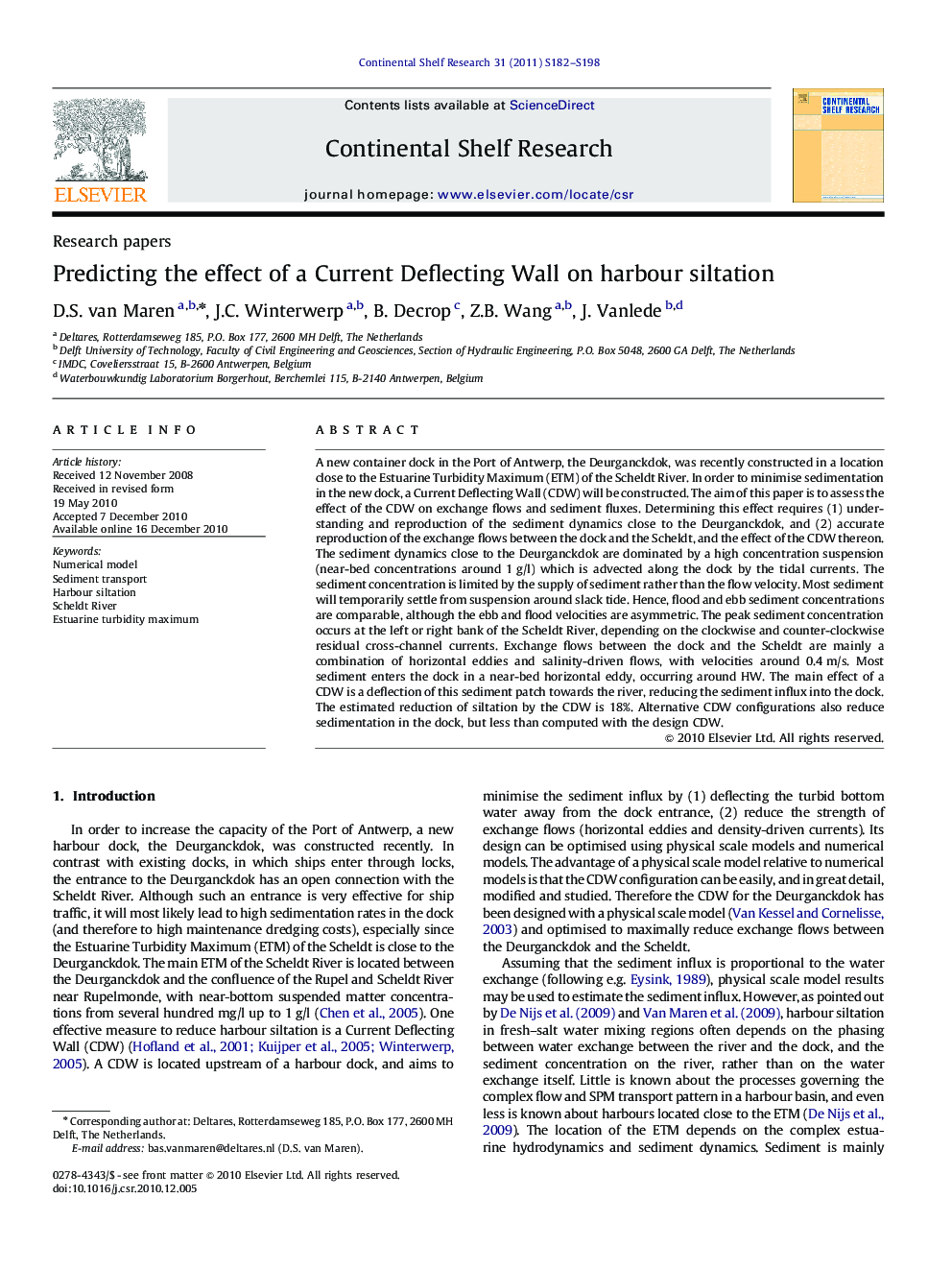| Article ID | Journal | Published Year | Pages | File Type |
|---|---|---|---|---|
| 4532750 | Continental Shelf Research | 2011 | 17 Pages |
A new container dock in the Port of Antwerp, the Deurganckdok, was recently constructed in a location close to the Estuarine Turbidity Maximum (ETM) of the Scheldt River. In order to minimise sedimentation in the new dock, a Current Deflecting Wall (CDW) will be constructed. The aim of this paper is to assess the effect of the CDW on exchange flows and sediment fluxes. Determining this effect requires (1) understanding and reproduction of the sediment dynamics close to the Deurganckdok, and (2) accurate reproduction of the exchange flows between the dock and the Scheldt, and the effect of the CDW thereon. The sediment dynamics close to the Deurganckdok are dominated by a high concentration suspension (near-bed concentrations around 1 g/l) which is advected along the dock by the tidal currents. The sediment concentration is limited by the supply of sediment rather than the flow velocity. Most sediment will temporarily settle from suspension around slack tide. Hence, flood and ebb sediment concentrations are comparable, although the ebb and flood velocities are asymmetric. The peak sediment concentration occurs at the left or right bank of the Scheldt River, depending on the clockwise and counter-clockwise residual cross-channel currents. Exchange flows between the dock and the Scheldt are mainly a combination of horizontal eddies and salinity-driven flows, with velocities around 0.4 m/s. Most sediment enters the dock in a near-bed horizontal eddy, occurring around HW. The main effect of a CDW is a deflection of this sediment patch towards the river, reducing the sediment influx into the dock. The estimated reduction of siltation by the CDW is 18%. Alternative CDW configurations also reduce sedimentation in the dock, but less than computed with the design CDW.
Research highlights► The sediment dynamics in the Scheldt near the Deurganckdok are strongly influenced by sediment supply. ► Harbour siltation is strongly influenced by the phasing between exchange flows and sediment supply. ► In the Deurganckdok, the influx of sediment occurs during a combination of near-bed inflow, horizontal large-scale eddies, and a concentration peak on the Scheldt River. ► Harbour siltation can be reduced with a Current Deflecting Wall. ► The effect of a Current Deflecting Wall can be numerically modelled.
